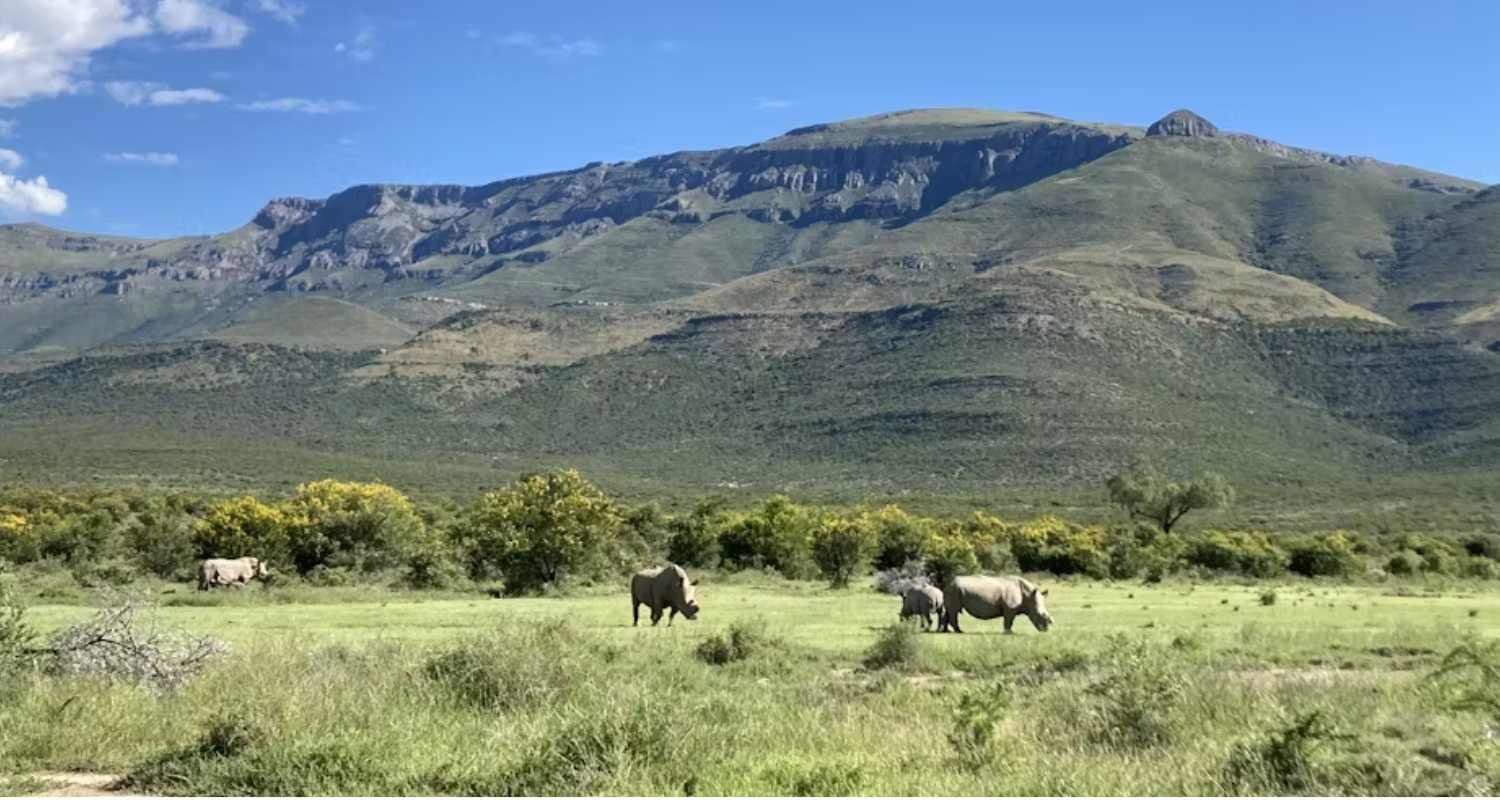
South Africa’s conservation model: why expanding the use of biodiversity to generate money is a good idea
South Africa’s government is calling for public comments on an updated version of its existing biodiversity economy plan.
The National Biodiversity Economy Strategy aims to conserve biodiversity while also contributing to job creation and economic growth. It proposes to do this by promoting sustainable use of the country’s natural resources.
The strategy is being revised so that the country’s national policy is better aligned with recent international policy developments in the biodiversity sphere. The most important of these is the Convention on Biological Diversity’s Kunming-Montreal Global Biodiversity Framework.
This requires countries to develop domestic policies and regulations to ensure that they conserve more of their land in ways that are fair to the people on that land.
Not everyone is happy with the strategy and its proposed revisions. It’s been criticised for monetising and exploiting biodiversity – in other words, using biodiversity to generate money. For example, the strategy lists using wildlife for fair-chase trophy hunting, meat hunting and wild meat sales. It also lists fishing and harvesting indigenous plants (for example, for medicine and tea) and insects (for food).
But we think the strategy is a step in the right direction. We are conservation scientists who have conducted extensive research into the outcomes of different conservation strategies in southern Africa. Our work shows sustainable use of wildlife is an important strategy for expanding the area under wildlife conservation in ways that also benefit local people.
Like other southern African conservation scientists, we support the revisions to the strategy. They show that the government is planning to meet global biodiversity commitments in a way that benefits local people, wildlife and ecosystems.
The strategy addresses gaps in South Africa’s conservation model, such as the fact that it still largely excludes previously disadvantaged groups of people. It also aligns ambitious global goals for expanding protected areas with the country’s pressing development needs.
In our view the revised strategy is an important step towards addressing these needs.
Expanded remit
South Africa is a signatory to the Convention on Biological Diversity. As such it’s required to report against 23 targets. For example, Target 3 is to conserve 30% of all lands and seas by 2030. Target 9 is to manage wild species sustainably to benefit people.
More than its predecessors, the convention’s latest framework recognises the need to conserve biodiversity as well as how biodiversity benefits people. Southern African countries such as South Africa, Namibia and Zimbabwe have long acknowledged the link between wildlife and nature’s value to people through sustainable use conservation models.
Here are some examples.
South Africa’s current model allows landholders to derive economic benefits from sustainably using wildlife on their lands. This is commonly done through ecotourism, recreational hunting and sales of live game and game meat.
This model results in many landholders opting for wildlife-based enterprises on their land, instead of other land uses like agriculture. The outcome is often biodiversity conservation beyond protected areas, because it benefits people.
This model has resulted in wildlife-based enterprises occurring across 14%-17% of the country’s land. Wild herbivore numbers have increased tenfold since the 1960s.
The country’s revised strategy aims to expand this model. It sets out ways in which people can derive livelihoods that ensure biodiversity’s benefits – both monetary and non-monetary – reach previously disadvantaged groups.
Namibia and Zimbabwe have also allowed private landholders and communities to become custodians of the wildlife on their land by establishing conservancies. These offer ecotourism, trophy hunting or both. The result has been the recovery of wildlife populations and improved livelihoods for people.
But there’s some push back on the concept of sustainable use, mostly from the global north. In particular, trophy hunting is opposed on moral grounds and perceptions that it threatens wildlife populations.
Our view, however, is that the market expansion potential of key wildlife economy activities shouldn’t be diminished.
Trophy hunting
South Africa’s trophy hunting industry is one of the pillars of its wildlife economy. The revised Biodiversity Economy Strategy aims to expand this activity to unlock conservation enterprises on community land.
Trophy hunting is estimated to contribute US$250 million per year to the economy and support 17,000 jobs, mostly in rural areas. Currently, it largely takes place on extensive private game ranches.
We think trophy hunting and other sustainable use activities like meat hunting and meat sales are important tools for including communities in conservation.
Firstly, hunting has lower barriers to entry than ecotourism. It can also take place in less accessible and less scenic places, meaning it can help support conservation and livelihoods where ecotourism cannot.
Secondly, undertaking several activities on a piece of land, including trophy and meat hunting, increases the resilience of the enterprise. Such resilience will be critical for including communities in conservation efforts.
But relying too heavily on trophy hunting to sustain conservation would be a mistake. It should be used as just one tool in a diversified biodiversity economy toolkit.
This is what the government’s revised Biodiversity Economy Strategy seeks to do. It includes trophy hunting as one of many biodiversity-based economic activities the country can invest in, particularly in multi-use conservation landscapes which include protected areas and working landscapes. These working lands include both private and community land.
The revision also includes a renewed focus on ecotourism and game meat. Additionally, it lists activities like live sales of game, bioprospecting (searching for and commercialising nature products) and fishing.
A common concern of sustainable use on communal land is that it can become a “free for all”. This assumption is a dangerous oversimplification. However, good governance is needed. Investment into wildlife-based enterprises on community land should require a governing body, business and management plans, benefit-sharing agreements and monitoring protocols.
Looking ahead
South Africa, Namibia and Zimbabwe are some examples of African countries that have committed to policies aimed at unlocking well-governed, multi-use landscapes that support diverse livelihood strategies and link people to nature’s values.
The evidence shows that such landscapes can support the recovery of wildlife populations, the restoration of ecosystems, the improvement of rural livelihoods and rural innovation and resilience.
Hayley Clements, Senior Researcher, African Wildlife Economy Institute and Centre for Sustainability Transitions, Stellenbosch University; Alta De Vos, Associate Professor, Centre for Sustainability Transitions, Stellenbosch University, and Matthew Child, PhD candidate, University of Pretoria
This article is republished from The Conversation under a Creative Commons license. Read the original article.
-

Dr Matthew Child
Research Associate -

-
Alta De Vos
We support the free flow of information. Please share:
More content
-

What Foot and Mouth Disease-free means for South Africa’s game meat trade
Ms Lydia Daring Bhebe…Explore the latest developments in South African provinces achieving and maintaining Foot and Mouth Disease (FMD) free status…
Articles -

The world wildlife trade regulator is 50 – here’s what has worked and what needs to change
Daniel Challender…Most countries implement Cites, the Convention on International Trade in Endangered Species of Wild Fauna and Flora as…Articles -

Enabling Sustainable Wildlife Trade
Prof Francis VorhiesEnabling sustainable wildlife trade is a key policy measure for growing Africa's wildlife economy. In this respect, CITES…
Articles -

Has CITES become too complicated to be effective?
Prof Francis VorhiesGovernments agreed to the text of CITES in the 1970s, which is quite straightforward. However, the agreement’s implementation…
Articles -

From poachers to providers: Can Africa's wild meat market save wildlife?
Dr Wiseman NdlovuHave you ever considered how wild meat could be more than just a cultural staple but also a…
Articles -

As a fellow of the African Wildlife Economy Institute (AWEI), I am excited to attend the upcoming 3rd…
Articles -

A theory of change to improve conservation outcomes through CITES
Dr Michael 't Sas-Rolfes…Here we articulate the implied theory of change (ToC) underpinning the design and operation of CITES (Convention on...
2025Research -

Wild Meat Value Chain Integration Systems: Opportunities for Value Chain Formalisation and Scaling in Africa
Dr Wiseman Ndlovu…Establishing a legal, safe and sustainable wild meat sector promises to potentially reduce demand for illegally sourced meat...
2025Research -

AWEI's 2024 Wildlife Economy Dialogue Series
Ms Emily TaylorRediscover 2024: A year of insight and inspiration
In 2024, AWEI proudly hosted three ground-breaking dialogue series in…
Articles
Get updates by email
Through impactful research, stakeholder engagement, and professional development, AWEI is supporting the wildlife economy across Africa. Please subscribe for occasional updates on our work and forthcoming events.
Sign up for a quarterly dose of AWEI insights
In a complex and changing world, AWEI generates strategic ideas, conducts independent analysis on wildlife economies, and collaborates with global scholar-practitioners to provide training and expertise for biodiversity conservation, climate resilience, and inclusive economic opportunities in Africa.
